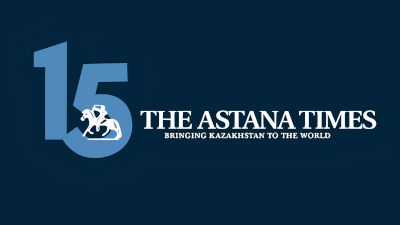ASTANA — Kazakhstan faces a pivotal year as it navigates a mix of economic challenges and opportunities that could significantly shape its trajectory. Risks such as resource depletion, decaying infrastructure and inflation threaten to hinder growth, while manufacturing, agriculture and sustainable energy sectors offer avenues for progress.

Photo credit: gov.kz
Erlan Karimov, writing for Economy.kz, an independent business media outlet, noted that the nation’s ability to address these risks and capitalize on emerging opportunities will determine its economic stability and growth in the coming years.
Economic risks on the horizon

Erlan Karimov. Photo credit: Personal archive of Yerlan Karimov
The potential decline in non-ferrous metals and energy resources poses a critical challenge for Kazakhstan’s export-driven economy. Oil production, for example, decreased from 95.4 million to 90.3 million tons in 2024 due to delays in the Tengiz field expansion. Uncertainty surrounding this project’s future may compel the government to scale back operations in other oil fields to prioritize Tengiz, which is deemed more viable under current global conditions.
Aging infrastructure compounds these challenges. Over 65% of Kazakhstan’s electrical networks are outdated, and most thermal power plants are over 60 years old. With demand for electricity expected to surpass supply by 2030, the country risks facing energy shortages that could stifle industrial and economic growth.
Financial instability adds to the concerns. In 2024, the state budget deficit reached $7.2 billion, driven by insufficient tax revenues. This shortfall has increased reliance on the National Fund, potentially undermining efforts to grow the fund to $100 billion.
Kazakhstan’s vulnerability to climate change further complicates its economic outlook. The country is warming at a rate faster than the global average, threatening agriculture and water resources. Floods caused by glacier melting in 2024 resulted in an estimated $1 billion in damages, and chronic water scarcity is projected by 2028.
Inflation in Kazakhstan may surpass the levels forecasted by international organizations and the National Bank of Kazakhstan (NBK) in 2025. While international bodies predict inflation to reach around 7%, this figure exceeds the NBK’s target by two percentage points.
The rising costs of utilities, which began to appear in bills as early as November 2024, have compounded financial pressures for Kazakh citizens. Additionally, fuel prices have increased, along with higher expenses for traffic violation fines, mobile communication services and other essential goods and services.
These factors will likely drive up the prices of basic consumer goods and services, potentially accelerating inflation in 2025 beyond estimates.
Promising opportunities for growth
Despite these challenges, Kazakhstan has substantial opportunities to bolster its economy in 2025. The manufacturing sector offers significant potential, particularly in processing technogenic mineral formations (TMFs). While investments in this area have been limited, TMF processing could prove valuable for road construction in regions with abundant tailings dumps, such as Ulytau and Aktobe.
Agriculture, especially sustainable practices aligned with a circular economy, represents another promising sector. Climate change will likely increase global demand for food, creating opportunities for Kazakhstan to expand agricultural production. Investments in food preservation methods, like canning, and innovations in animal husbandry, such as hydroponics technology, could enhance the sector’s resilience. The country’s vast reserves of fertile black soil also provide a foundation for sustainable crop cultivation.
Kazakhstan’s strategic location positions it to play a vital role in global trade. Developing a direct narrow-gauge railway from China to the Kuryk port could be a key economic driver. This project, offering a faster alternative to maritime transport for cargo delivery between China and Europe, has the potential to attract significant investment and generate jobs.
In energy, small modular nuclear power plants (SMRs) could address the challenges of infrastructure and energy shortage. Following a 2024 referendum approving the construction of nuclear power plants, SMRs offer a scalable, cost-effective solution with faster construction times and easier equipment transportation. Additionally, waste incinerators could complement energy generation efforts while addressing environmental concerns.
The construction sector also stands to benefit from Kazakhstan’s rising urbanization rate. Unlike many nations, Kazakhstan’s economic growth has been accompanied by population increases. Urbanization levels, which may unofficially exceed 75%, are driving demand for housing and infrastructure in major cities. Regions like Arkalyk, with its large clay deposits, could localize the production of building materials, supporting cost-effective and sustainable construction.


